All Types of Goldendoodles There Is
30.04.2021.
The popularity of crossbreeds and designer breeds is pretty well-known. There aren’t many crossbreeds that are as popular as the Goldendoodle. However, future Goldendoodle owners can be easily confused when it comes to the lingo Goldendoodle breeders use. F1, F1b, F2… it all sounds a little bit confusing if you don’t know what that means.
Luckily, we are here to help! Here is what you should know about different generations and crossbreeding of the Goldendoodle.
Goldendoodles are a crossbreed
The first thing we should understand is that Goldendoodles are crossbreeds. That means they are not a part of any kennel clubs or breeding clubs accepted by leading cynology associations. Whether they will become a recognized breed is yet to be seen.
These dogs are Golden Retriever Poodle mixes. That means puppies are produced by mixing these two pure-blooded breeds. The initial idea for creating a crossbreed like the Goldendoodle or the Labradoodle was noble. Their creators wanted to breed an intelligent, working dog that could become a service dog for those that have dog hair allergies.
Different -doodles usually inherit the Poodle’s low-shedding characteristics, making them ideal pets and service dogs to those of us with dog hair allergies.
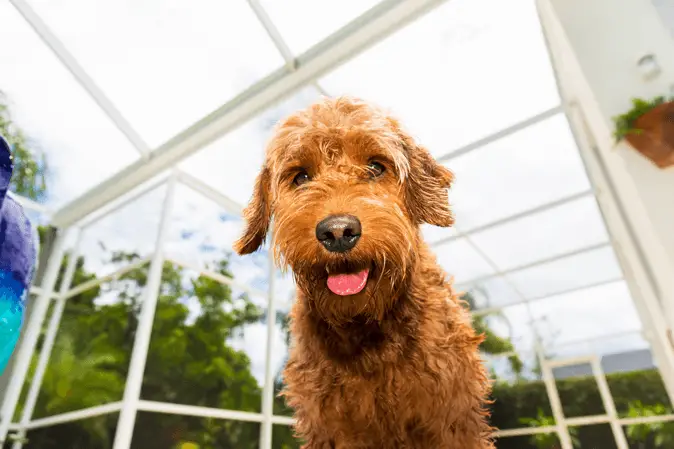
These days, Doodles have become popular family pets more than they are fulfilling the role of service dogs. People love their intelligence, playful characters, and low-shedding characteristics. Another thing owners consider a huge bonus is that Goldendoodles come in different size varieties, depending on what type of Poodle Goldens are bred to.
Want to know more about low-shedding dogs? Check out this article - Low-shedding dog breeds.
Goldendoodle breeding
Dog breeding is not as easy as some might think. It is a lot more complicated than just mating two dogs and allowing them to get puppies. There is a lot of planning and studying involved. Responsible breeders spend hours and hours studying pedigrees and medical histories to find suitable partners for their dogs. There is a huge bonus when breeding clubs stand behind you and help you make the best decision.
Goldendoodles are crossbreeds, so there aren’t official pedigrees you can refer to and check. Luckily, some clubs around the world are trying to organize Goldendoodle breeding. However, it is challenging to manage something that was very unorganized thus far. If you are interested in getting a Goldendoodle, you should be familiar with the language used to describe these hybrids. Generational descriptions are the basics all future owners should understand. Here is how these dogs are described;
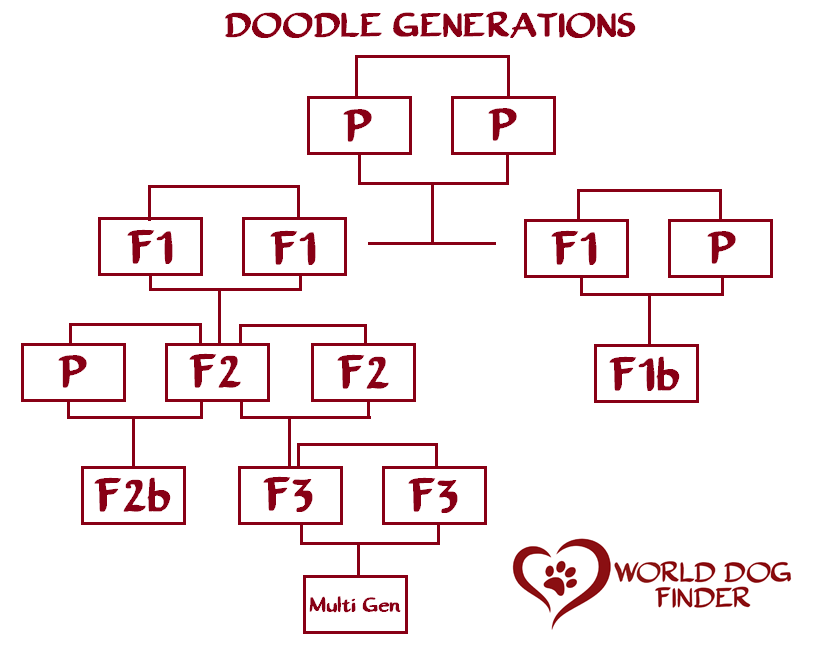
P generation
We need to understand that Goldendoodles are crossbred from two pureblooded dogs - Golden Retriever and Poodle. When it comes to breeding pureblooded dogs, their puppies are described as the “P” generation.
Pureblooded + pureblooded = P generation puppy.
An easy way to remember - think of P as “pureblooded” or “pedigree.” Goldendoodles cannot be considered P since they are a crossbreed of different breeds. P generation can only be bred within a pureblooded breed.
F1 Goldendoodle
The F1 Goldendoodles are the first generation dogs. F1 Goldendoodles are created by crossbreeding pureblooded (P) Golden Retrievers and Poodles. Their genetic material has a 50:50 split, and you can never be sure which part of the family will be dominant. While the genetic material might be 50:50, puppies still might be more or less like one parent or the other. That means F1 Goldendoodle puppies might be curlier coats, like their Poodle parent, or have straighter, heavily shedding coats, like their Golden parent. The formula for this type of breeding looks like this;
Golden Retriever (P) + Poodle (P) = F1 Goldendoodle
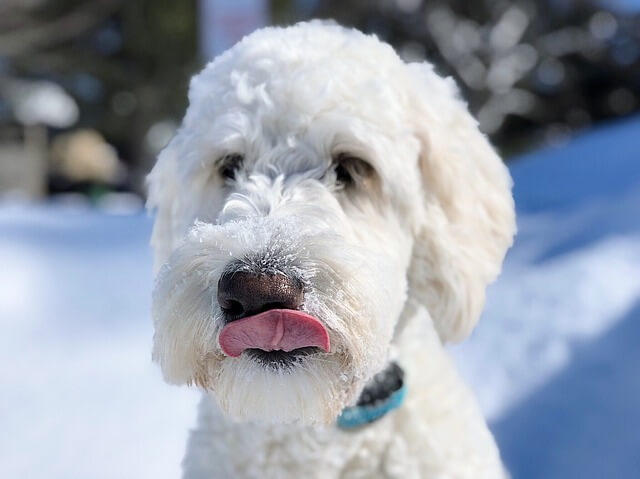
F2 Goldendoodle
F2 Goldendoodles are created by crossbreeding two F1 Goldendoodles. If you want to create a new registered, recognized dog breed, you have to breed dogs whose puppies give consistent characteristics. F2 Goldendoodles still have 50:50 genetic material, and puppies still might give unpredictable traits. However, this is the first step towards getting “pureblooded” crossbreeds. Of course, the process is not that simple, and creating a breed usually lasts several decades. The formula for F2 Goldendoodles looks like this;
F1 Goldendoodle + F1 Goldendoodle = F2 Goldendoodle
F3 Goldendoodle
F3 Goldendoodles are created by breeding two F2 Goldendoodles. The genetic split should remain the same as in the previous Goldendoodle generation. However, there are some concerns Goldendoodle breeders express when breeding multiple generations of Goldendoodles. Some owners and breeders reported there are health issues with these dogs.
These health issues can be inherited from both sides of the family and might have skipped the F1 and F2 generations. After the F3 generations, all further F generations are simply called “multi-generation” Goldendoodle.
F2 Goldendoodle + F2 Goldendoodle = F3 Goldendoodle
F1b Goldendoodle
To understand why F1b crosses happen, you need to know why Goldendoodles are crossbred specifically from Poodles and Golden Retrievers. Goldens are used for their exemplary character, and Poodles are bred for their low-shedding “hypoallergenic” characteristics.
When an F1 Goldendoodle is created, sometimes their coat doesn’t inherit the low-shedding characteristics. Instead, their coat is more like the Retriever’s and sheds - a lot. If that happens, breeders can make another cross. They will usually cross one of the parent breeds (usually the Poodle) to promote their characteristics. Let’s say they want a curlier coat in Goldendoodle puppies.
In that case, they cross an F1 Goldendoodle with a (P) Poodle. The goal is to obtain a genetic split of 75:25 in favor of the Poodle. The formula for F1b Goldendoodle looks like this;
F1 Goldendoodle + P Poodle = F1b Goldendoodle.
F2b Goldendoodle
The F2b Goldendoodle cross will follow the same pattern as the F1b generation. However, instead of using an F1 Goldendoodle, the breeder will use an F2 Goldendoodle. Keep in mind, F2 Goldendoodles are the generation whose parents are two Goldendoodles. So the genetic split would be 75:25 in favor of the breed that was backcrossed with the F2 Goldendoodle. The formula for an F2b Goldendoodle looks like this;
F2 Goldendoodle + P Poodle/Golden = F2b Goldendoodle
The most popular crossbreed in the world is the Labradoodle. Check out more information about them here - Labradoodle crossbreed.
Now you know what all this F-business is about. You can easily understand what the Goldendoodle breeder is talking about. However, the main issue will still remain. There is no way of actually knowing which dogs were bred since no kennel club stands behind Goldendoodle breeders. Our sincere advice would be to look for Goldendoodle rescues and adopt a crossbreed.
World Dog Finder team



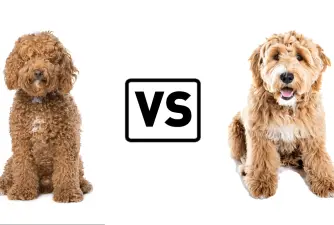

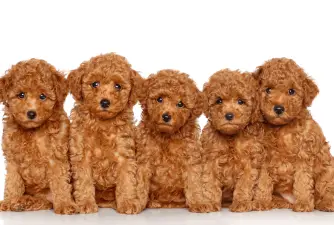

Share